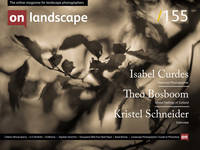Stephen Hutchins chooses one of his favourite images

Stephen Hutchins
The common thread in my life has been photography. My interest has waxed and waned and reached its present level only with the arrival of digital cameras, when the ability to process and control images myself offered new creative opportunities. I am over 60 years old, married with four children and split my time between Brussels and Sweden. Whenever family and other commitments allow, I will travel with my cameras, nearly always to the north of Europe and to the islands of the Arctic. Landscapes have been my passion from the earliest days and, apart from family portraits, it is rare for me to include people in my images.
I believe that to be classed as “great”, an image must speak to your heart at the deepest level. Its technical merits are less important than the story it tells. It will touch you emotionally and make you want to learn more about the subject and the photographer. Its message may not be immediately obvious, but it will engage you and draw you into its embrace.
I would like to share one such image with you. It is well-known within its own particular circle but maybe less so in the wider world. It speaks of folly, human arrogance, misplaced hubris and a desperate struggle to survive against overwhelming odds. Around it gathers a tragic human story of love, devotion and lonely death in the high Arctic.
The image was taken by Nils Strindberg, a member of the Swedish 1897 An-drée Arctic expedition. Three men, Andrée, Fraenkel and Strindberg, took off in a hydrogen balloon from North-West Svalbard in an attempt to cross the North Pole. After their departure, which nearly ended in catastrophe, they disappeared into the north and vanished from human ken. Their remains were found 33 years later, entirely by chance, on the island of Vitøya, North-East of Svalbard. They had crashed on the sea ice and struggled for three months across the frozen sea in an effort to reach safety. As winter closed in they managed to reach Vitøya, but within days all three were dead. Rescue parties searched across the Arctic but had no success. One party actually visited Vitøya, but the remains were covered with snow and ice and were not discovered.
The balloon was technically flawed. It leaked hydrogen with alarming speed but had no system to replenish it. The steering system relied on ropes to trail across the ice to slow the balloon and manage its direction, but these were lost immediately after the launch, and would, in any case, have snagged on the rough sea ice. There was neither a clear understanding nor knowledge of Arctic weather conditions, so assumptions as to wind direction were largely false and the balloon would zig-zag across the ice before crashing within three days of its launch. The balloon team was hopelessly ill-equipped to survive in the Arctic. Andrée considered that, since there was no chance of a crash, there was no merit in planning for one. He regarded the survival equipment that they took with them as an emergency lifeboat; enough to survive for a short while until rescue arrived.

